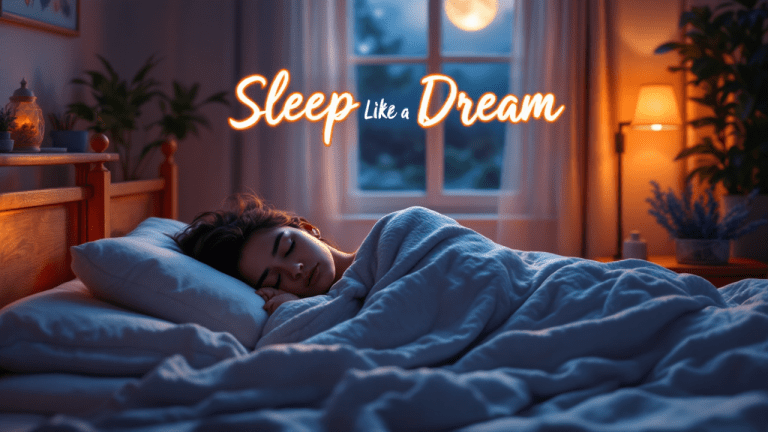Smart bedroom technology is changing how people sleep. It’s not about fancy gadgets or futuristic promises. It’s about making your bedroom work better for you. Devices like smart thermostats, automated lights, sleep trackers, and air quality sensors help you control your sleep environment. They can adjust temperature, light, and even sound to match your needs. The goal is simple: help you sleep better and wake up feeling refreshed.
What Is Smart Bedroom Technology?
Smart bedroom technology includes a range of devices that connect to your home network. These devices can be controlled remotely or set to work automatically. Common examples are:
- Smart thermostats that adjust room temperature
- Automated lighting systems that change brightness or color
- Smart mattresses that track sleep patterns
- Sleep trackers that monitor heart rate and movement
- Voice assistants that respond to commands
- Automated blinds that open or close at set times
- Air quality sensors that detect humidity, CO2, and pollutants
- Connected sound machines that play calming sounds
These devices can work together. For example, a smart thermostat can lower the temperature when your sleep tracker detects you’re falling asleep. Automated blinds can close at sunset. A voice assistant can turn off the lights when you say “Goodnight.”
How Does It Work?
Most smart bedroom devices connect to your Wi-Fi. You control them using a smartphone app or voice commands. Some devices can be set to work automatically based on your habits or preferences.
A smart thermostat learns your preferred temperature and adjusts the room accordingly. Automated lighting systems can be programmed to dim at bedtime and brighten in the morning. Sleep trackers collect data about your sleep quality and send it to your phone. Voice assistants can control multiple devices with a single command.
Many devices can be integrated with other smart home systems. For example, your smart bedroom can connect to your security system, entertainment system, or kitchen appliances. This creates a seamless experience where everything works together.
Why People Use Smart Bedroom Technology
People use smart bedroom technology for several reasons. The main benefit is better sleep quality. Devices that control temperature, light, and sound can create a more comfortable sleep environment. This helps people fall asleep faster and stay asleep longer.
Energy savings are another reason. Smart thermostats and automated lighting systems can reduce energy use by adjusting settings when you’re not in the room. Voice control and automation make it easier to manage your bedroom without getting out of bed.
Personalized comfort is also important. Smart devices can be set to match your preferences. For example, you can program your lights to turn on at a certain brightness or set your thermostat to a specific temperature. Some devices learn your habits over time and adjust automatically.
Health monitoring is another benefit. Sleep trackers can provide insights into your sleep patterns. This can help you identify issues like insomnia or sleep apnea. Air quality sensors can alert you to problems like high humidity or poor ventilation.
Real-Life Examples
Many people have found smart bedroom technology helpful. For example, someone with trouble falling asleep might use a smart thermostat to keep the room cool and a connected sound machine to play white noise. Automated blinds can block out early morning light, helping them sleep longer.
A person who travels often might use voice control to turn off lights and lock doors before bed. They can check their bedroom’s temperature and air quality from their phone while away. This gives them peace of mind and helps them maintain a consistent sleep routine.
Someone with health concerns might use a sleep tracker to monitor their heart rate and movement. The data can be shared with a doctor to identify potential issues. Air quality sensors can alert them to problems like high CO2 levels, which can affect sleep quality.
Common Devices and Their Uses
Smart Thermostats
Smart thermostats adjust room temperature based on your preferences. They can be programmed to lower the temperature at bedtime and raise it in the morning. Some models learn your habits and adjust automatically. This helps create a comfortable sleep environment and can reduce energy use.
Automated Lighting Systems
Automated lighting systems can be programmed to dim at bedtime and brighten in the morning. Some models change color to match your mood or time of day. Voice control makes it easy to turn lights on or off without getting out of bed.
Smart Mattresses
Smart mattresses track sleep patterns, heart rate, and movement. They can provide insights into sleep quality and help identify issues like insomnia or sleep apnea. Some models can adjust firmness or temperature to match your preferences.
Sleep Trackers
Sleep trackers monitor heart rate, movement, and sleep stages. They send data to your phone or tablet, where you can review your sleep patterns. This can help you identify habits that affect your sleep and make changes to improve it.
Voice Assistants
Voice assistants respond to commands and can control multiple devices. For example, you can say “Goodnight” to turn off lights, lock doors, and set the thermostat. Voice control makes it easy to manage your bedroom without getting out of bed.
Automated Blinds
Automated blinds open and close at set times. They can block out early morning light or let in natural light at sunrise. Some models can be controlled remotely or set to work automatically.
Air Quality Sensors
Air quality sensors detect humidity, CO2, and pollutants. They can alert you to problems like high humidity or poor ventilation. Some models can be integrated with smart thermostats or ventilation systems to improve air quality.
Connected Sound Machines
Connected sound machines play calming sounds like white noise, rain, or ocean waves. They can be controlled remotely or set to work automatically. Some models can be integrated with other smart devices to create a relaxing sleep environment.
Benefits and Limitations
Smart bedroom technology offers several benefits. It can improve sleep quality, save energy, and make it easier to manage your bedroom. Devices that control temperature, light, and sound can create a more comfortable sleep environment. Voice control and automation add convenience.
However, there are some limitations. Smart devices can be expensive. They may require a stable Wi-Fi connection and regular updates. Some people find the setup process complicated. Privacy and security are also concerns, as devices collect and store personal data.
Tips for Getting Started
If you’re interested in smart bedroom technology, start with one or two devices. Choose products that address your specific needs. For example, if you have trouble falling asleep, try a smart thermostat or connected sound machine. If you want to monitor your sleep, start with a sleep tracker.
Look for devices that are easy to set up and use. Read reviews and check compatibility with your existing smart home system. Consider privacy and security features, such as data encryption and two-factor authentication.
Start small and add devices over time. This lets you learn how each device works and decide what works best for you. Don’t feel pressured to buy everything at once. Focus on products that make a real difference in your sleep routine.
Final Thoughts
Smart bedroom technology is not about flashy gadgets or futuristic promises. It’s about making your bedroom work better for you. Devices that control temperature, light, and sound can help you sleep better and wake up feeling refreshed. Voice control and automation add convenience. Health monitoring and energy savings are added benefits.
If you’re thinking about trying smart bedroom technology, start with one or two devices. Choose products that address your specific needs. Take your time and learn how each device works. Focus on products that make a real difference in your sleep routine.
Smart bedroom technology won’t solve every sleep problem. But it can help create a more comfortable and convenient sleep environment. That’s something most people can appreciate.





